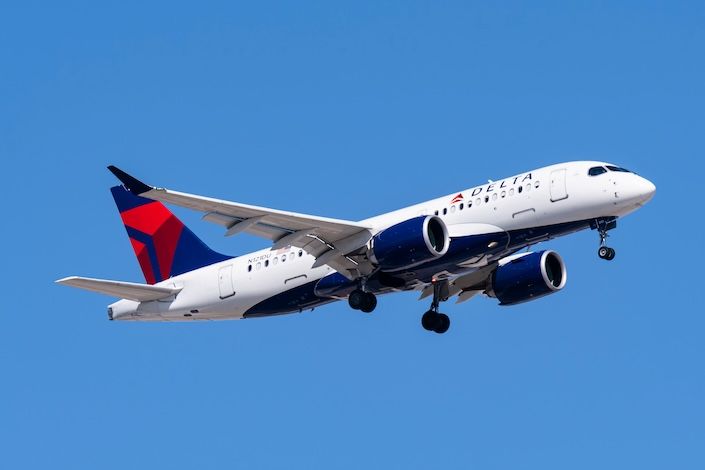Where travel agents earn, learn and save!
News / Up to 95%: The US's Middle Eastern routes with the highest load factors
Last year, the US had 46 passenger routes to the Middle East

Last year, the US had 46 passenger routes to the Middle East. This was when United Airlines flew between Washington Dulles and Amman, replaced by Royal Jordanian in March 2025. The routes were operated by 10 carriers: American Airlines, Delta Air Lines, El Al, Emirates, Etihad Airways, Kuwait Airways, Qatar Airways, Royal Jordanian, Saudia, and United. (Turkish Airlines' hub is on the European side of the Bosphorus.) According to data from the US Department of Transportation, they carried 9.1 million round-trip passengers, many bound for other places, and filled 84.2% of available seats.
With a 94.7% load factor, New York JFK to/from Tel Aviv was first in this sense. Fewer seats than before the war helped, motivating Arkia to commence flights in early 2025. While uncertain, the same reason may motivate Israir to return to the US after a long absence, although time is marching toward the peak summer.
These markets had the 10 highest load factors
They are summarized below. All are very high, which is commendable, but it is always about how they were achieved. New York JFK-Tel Aviv was briefly discussed above. Interestingly, its strong result of 94.7% was not as high as the top European route last year. The US DOT shows that Tel Aviv's figure was particularly high because of El Al's 94.8% figure and heavy dominance. Indeed, it carried nearly all passengers, as Delta only operated between June and August 2024.
Not only did this airport pair have the highest load, but it also had the most passengers. Caution is needed. The figure below (508,000) is only for those who flew nonstop with Delta and El Al. It does not consider passengers who connected to another flight at a hub en route, which obviously would increase the market size.
| Load factor in 2024 | Airport pair | Round-trip passengers* | Airline(s) |
|---|---|---|---|
| 94.7% | New York JFK-Tel Aviv | 508,000 | Delta, El Al |
| 94.3% | Doha-Dallas/Fort Worth | 364,000 (Hyderabad was the top market) | Qatar Airways |
| 93.9% | Newark-Tel Aviv | 369,000 | El Al, United |
| 93.8% | Doha-Seattle | 204,000 (Delhi was the most popular market) | Qatar Airways |
| 93.4% | Tel Aviv-Los Angeles | 163,000 | El Al |
| 92.9% | Tel Aviv-Boston | 74,000 | El Al |
| 92.8% | Tel Aviv-Miami | 124,000 | El Al |
| 92.8% | Abu Dhabi-Chicago O'Hare | 252,000 (Hyderabad was the top market) | Etihad |
| 92.4% | Doha-Los Angeles | 241,000 (Yerevan was the most popular market) | Qatar Airways |
| 92.2% | Doha-Atlanta | 188,000 (Hyderabad was the top market) | Qatar Airways |
| * Only those who flew nonstop |
A word on load factors and why they matter
Technically, this article concerns seat factors, as freight is not considered. But let's stick with load factors for simplicity. It is the proportion of available capacity (seats here, but seat miles could be used instead) filled by traffic (passengers or revenue passenger miles instead). It is one route performance element, and should not be considered in isolation from other factors.
If too much capacity is available relative to demand at a particular price, fares and yields will reduce, but loads should rise. Conversely, fares and yields may increase with too little capacity for the demand. These things will depend on other factors, including competition, hence the interest from other airlines in the massive New York-Tel Aviv market.
A route with a very high load factor may look like it performs very well, but it is about how it was achieved. (Those with disasterously low loads, such as Avelo's sub-20% routes within the US, are much more obvious.) It could simply be full of lower-yielding leisure or visiting friends and relatives traffic, the lowest yield segments due to lower premium demand. This may not mean good performance unless the costs are low enough. It is about the relationship between costs, revenue, capacity, and traffic, which all contribute to a route's financial performance or network contribution.
Hang on: Where are Emirates' routes?
While Qatar Airways and Etihad filled half the top 10 list, Emirates did not feature once. According to the US DOT, Qatar Airways' average load across all its US routes was 90.1%, compared to 88.5% for Etihad and just 77.2% for Emirates.
Emirates' heavy use of Airbus A380s contributes to a substantial 418 seats per flight, compared to 329 for Qatar Airways and 323 for Etihad. Despite its vast network, flights are harder to fill consistently. Moving to four-class equipment has helped reduce this number, with seats per flight down from 440 in 2019 but still above the average of 405 in the past 20 years.
The DOT shows that Dubai-Houston (68.6%), Dubai-Boston (72.9%), and Dubai-Orlando (74.1%) dragged results down. In contrast, Dubai-Chicago O'Hare had the highest load. Emirates filled 87.5% of the available seats, which was helped by deploying the 777-300ER, including its lowest-capacity version, the 324-seat configuration, in December. Except for a one-off service in July 2016, Emirates has not used the A380 to O'Hare.











